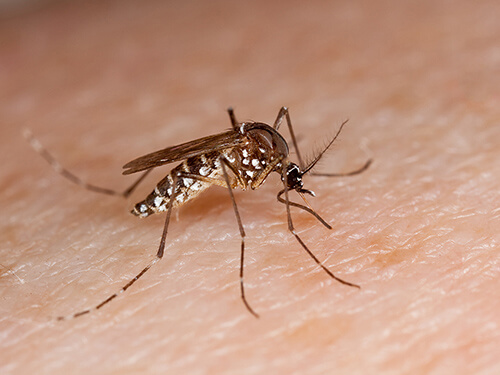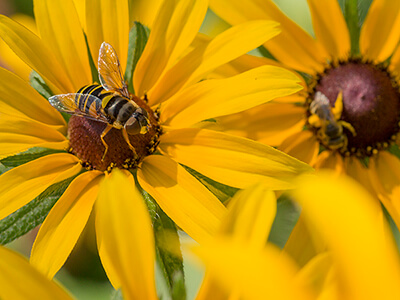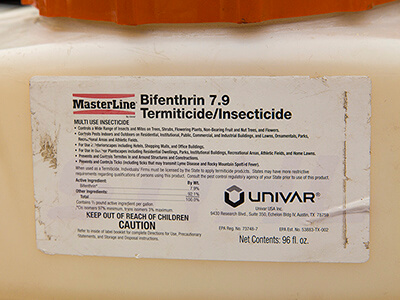HOW TO CONTROL MOSQUITOES WITHOUT KILLING POLLINATORS
& OTHER IMPORTANT WILDLIFE
by Susan Gitlin
Warm weather and mosquitoes will be here before you know it, leading many of us to look for ways to enjoy the outdoors without being pestered by those annoying little—and sometimes disease-bearing—biters.
There is a lot of information being disseminated by health organizations about health risks to humans from mosquito bites (see CDC links, below). But besides protecting ourselves from being targets, we need to work at eliminating mosquito habitat and controlling their numbers. There are a number of ways we can do this safely and effectively.

like Zika and Dengue. Photo courtesy USDA.
Because mosquitoes have no trouble flying from yard to yard, the best way to combat them is to work with our neighbors to collectively identify and implement opportunities to reduce mosquito populations. Below is a set of approaches that are suggested by entomologists, public health organizations, and agricultural extension programs.
- Unclogging gutters
- Covering, turning over, or moving indoors any equipment, containers, or toys that might collect water
- Straightening sagging tarps or other covers
- Filling in areas under outdoor faucets or air conditioning drains
- Repairing damaged screens on rain barrels
- Removing English Ivy (The dense nature of ivy allows it to hold in pooled water where mosquitoes can breed, provides a humid area that mosquitoes like, and protects mosquitoes from pesticide sprays.)

2. For areas of uncovered water, like ponds or bird baths, consider these approaches:
- Changing the water regularly
- Using Mosquito Dunks ® (deadly to mosquito, blackfly, and fungus gnat larvae, but harmless to other living things), or
- Keeping the water moving (e.g., with a fountain)

- Spray only in the early morning or early evening. Most pollinators are not out and about during these time periods.
- Do not spray flowering plants. (One company that provides pesticide spraying services says that before spraying flowers they “shoo” away bees with bursts of air. It is doubtful that this truly protects bees, as the majority of native bees are less than ¼” long and therefore difficult to spot. Moreover, bees will return immediately to those flowers, either into the path of the spray or to the flowers, where there may be pesticide residue.)
- Make sure that no spray enters your neighbors’ yards, and notify your neighbors before you spray so that they can take any desired or necessary precautions to protect any bees or other insects that they have in their yards.
- Consider using nontoxic repellants in lieu of the toxic pesticides. Some mosquito-spraying companies offer such alternatives.

which is highly toxic to bees, fish and aquatic organisms.
It is also considered a possible human carcinogen by the EPA.
Useful websites:
Centers for Disease Control and Prevention:
Westnile Prevention & Control
Avoid Mosquito Bites
Help Control Mosquitoes that Spread Dengue, Chikungunya, and Zika Viruses Fact Sheet
Mosquito Control—Environmental Protection Agency
Avoid Asian Tiger Mosquitoes—Maryland Department of Agriculture
Backyard Mosquito Management—Beyond Pesticides
Honeybee Love: Keeping Honeybees Safe While Using Pesticides
Much thanks to Susan Gitlin for allowing me to post her article. How to Control Mosquitoes Without Killing Pollinators and Other Important Wildlife originally appeared on the Arlington Regional Master Naturalist site. Susan is a Virginia Master Naturalist and enthusiastic pollinator advocate.
